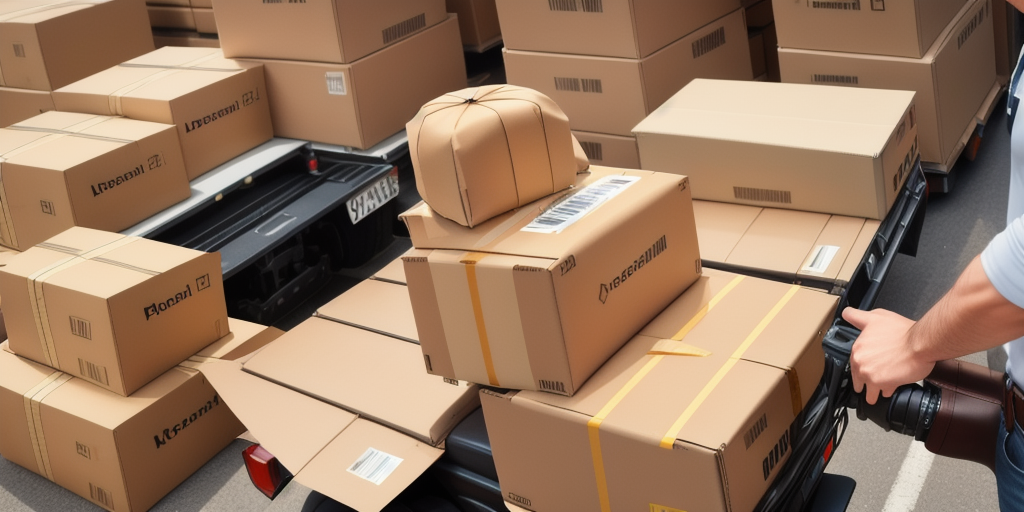The Benefits of Utilizing Drop-Off Points for Delivery Services
Delivery services have become an integral part of our lives, especially with the increasing popularity of e-commerce. According to Statista, the number of online shoppers worldwide has been steadily increasing, leading to a surge in demand for efficient delivery solutions. From groceries to electronics, consumers can order practically anything online and have it delivered to their doorstep. However, traditional delivery methods can be expensive and time-consuming for both customers and businesses. This is where drop-off points come in, offering a more streamlined and sustainable approach to package delivery.
How Drop-Off Points Revolutionize Delivery Services
Drop-off points are designated locations where customers can collect their deliveries, rather than having them delivered directly to their home or office. This concept has gained popularity in recent years, with many businesses and logistics companies adopting this method of delivery. According to a report by Forbes, the use of drop-off points has streamlined last-mile delivery processes, making them more efficient and cost-effective.
Eliminating Missed Deliveries
One of the primary advantages of using drop-off points is the elimination of missed deliveries. Traditional delivery methods often face challenges when recipients are unavailable at the time of delivery, leading to delays and additional delivery attempts. Drop-off points allow customers to pick up their packages at their convenience, reducing the frustration associated with missed deliveries.
Reducing Carbon Footprint
Consolidating multiple deliveries to a single location enables delivery vehicles to make fewer trips, thereby reducing fuel consumption and emissions. According to the Environmental Protection Agency (EPA), optimizing delivery routes and reducing vehicle miles traveled can significantly lower the carbon footprint of delivery services.
Advantages of Drop-Off Points in E-commerce
E-commerce has significantly contributed to the growth of drop-off points. With many customers unable to receive packages during regular business hours, drop-off points offer a convenient alternative for package collection. Typically located in accessible areas such as supermarkets, convenience stores, and petrol stations, drop-off points make it easier for customers to retrieve their deliveries without extensive travel.
Enhanced Convenience
Drop-off points provide flexibility, allowing customers to choose pickup times that fit their schedules. For instance, a study by Shaped found that the availability of drop-off locations near customers' homes or workplaces increases the likelihood of timely pickups, enhancing overall customer satisfaction.
Improved Package Security
With rising concerns over package theft, particularly in high-density urban areas, drop-off points offer a more secure option for package delivery. By having packages stored in designated secure locations, the risk of theft is minimized. According to NPD, secure package lockers are becoming increasingly popular as a measure to prevent theft and ensure the safe delivery of packages.
Enhancing Delivery Efficiency
Drop-off points not only benefit customers but also enhance the efficiency of delivery operations. By allowing delivery drivers to drop multiple packages at a single location, delivery times and resource utilization improve significantly.
Consolidated Deliveries
Consolidation of deliveries to drop-off points reduces the number of individual trips required, leading to better route optimization. Studies by ScienceDirect indicate that route optimization can lead to cost savings and reduced delivery times.
Reducing Failed Delivery Attempts
By utilizing drop-off points, the frequency of failed delivery attempts decreases. This not only saves time for delivery personnel but also reduces operational costs associated with redelivery. According to the Journal of Transportation, failed deliveries can account for up to 20% of total delivery attempts in some regions, making drop-off points a valuable solution.
Impact on the Logistics Industry
The introduction and expansion of drop-off points have had a significant impact on the logistics industry. As more businesses adopt this delivery method, logistics companies are adjusting their strategies to meet the increased demand.
Cost Reduction
By consolidating deliveries, logistics companies can save on fuel and labor costs. Additionally, the reduced need for multiple delivery attempts further cuts operational expenses. According to Logistics Management, last-mile delivery costs can account for as much as 53% of total delivery costs, highlighting the financial benefits of optimized delivery solutions like drop-off points.
Operational Challenges
While drop-off points offer numerous benefits, they also present challenges. Logistics companies must ensure that drop-off locations are strategically located and secure. Managing inventory and coordinating deliveries to multiple drop-off points requires robust logistics management systems to maintain efficiency and accuracy.
Customer and Environmental Benefits
Cost Savings for Customers
Customers benefit from cost savings by opting for drop-off points. Delivery charges are often lower compared to home or office deliveries, particularly when consolidating multiple packages. This can lead to significant savings, especially for frequent online shoppers.
Flexibility and Convenience
Drop-off points provide greater flexibility, allowing customers to pick up their packages at times that are convenient for them. Extended operating hours and multiple locations mean that packages can be retrieved outside of traditional business hours, which is particularly advantageous for individuals with busy schedules.
Environmental Impact
Utilizing drop-off points contributes to environmental sustainability by reducing carbon emissions and packaging waste. Fewer delivery trips mean lower fuel consumption, and consolidated deliveries allow for efficient packaging solutions that minimize waste.
Reduced Carbon Emissions
As previously mentioned, optimized delivery routes lead to lower fuel usage and fewer emissions. According to the Transport & Environment, efficient delivery systems can significantly decrease greenhouse gas emissions from the logistics sector.
Lower Packaging Waste
When packages are consolidated at a drop-off point, it allows for better optimization of packaging materials. Repackaging into appropriately sized boxes reduces excess packaging, contributing to waste reduction. The EPA emphasizes the importance of minimizing packaging waste as part of broader sustainability efforts.
Leveraging Technology for Seamless Drop-Off Services
Technology plays a crucial role in the efficiency and convenience of using drop-off points. From tracking packages to ensuring secure pickups, technological advancements have streamlined the entire process.
Package Tracking and Notifications
Modern delivery services offer robust tracking systems that allow customers to monitor their packages in real-time. Notifications about package status and availability at drop-off points enhance the user experience by providing timely updates.
Secure Package Access
Many drop-off points are equipped with secure lockers and access systems. Customers receive unique codes to retrieve their packages, ensuring that only authorized individuals can access them. According to IBM, secure package lockers are an essential component in preventing theft and ensuring the safe delivery of packages.
Comparing Cost Savings: Drop-Off Points vs. Traditional Delivery Methods
Drop-off points offer a cost-effective alternative to traditional door-to-door delivery methods. Both businesses and customers stand to benefit financially from reduced delivery charges and operational costs.
Business Savings
Logistics companies can lower their expenses by optimizing delivery routes and minimizing the need for multiple delivery attempts. Savings from reduced fuel consumption and labor costs can be substantial, improving overall profitability.
Customer Savings
Customers save money by avoiding additional delivery fees associated with missed attempts and redeliveries. The ability to consolidate purchases and handle multiple packages at a single drop-off point further enhances cost-effectiveness.
Environmental Savings
While not directly a financial saving, the reduction in carbon emissions and packaging waste contributes to broader sustainability goals, which can have long-term economic benefits by mitigating environmental impacts.
Conclusion
Drop-off points offer numerous advantages for both businesses and customers, revolutionizing the logistics and e-commerce industries. By enhancing delivery efficiency, reducing environmental impact, and providing significant cost savings, drop-off points address many of the challenges associated with traditional delivery methods. The integration of advanced technology further streamlines the process, making drop-off points a preferred choice for modern delivery services.
As the e-commerce sector continues to grow, the demand for efficient and sustainable delivery solutions will only increase. Drop-off points, with their flexibility and convenience, are well-positioned to meet this demand, offering a win-win scenario for businesses, customers, and the environment alike.








